Begrudging Solidarities: On Dhorpatan (No Winter Holidays)
Winter is a time for contemplation. With the almost-minus-degree temperature, the skeletal trees, the barren fields—everything and everyone is still and blanketed by snow. There is little to do to pass the time other than to ruminate and try to stay warm. In Dhorpatan or the valley of Dhor, a municipality in the Baglung district of Nepal, people avoid the stillness of winter by staying a step ahead of it. During October itself, they make their way towards the southern regions for warmer days. In villages, the houses are boarded up, locked and left behind as residents start their seasonal migration along with their livestock, grain stock and valuables.
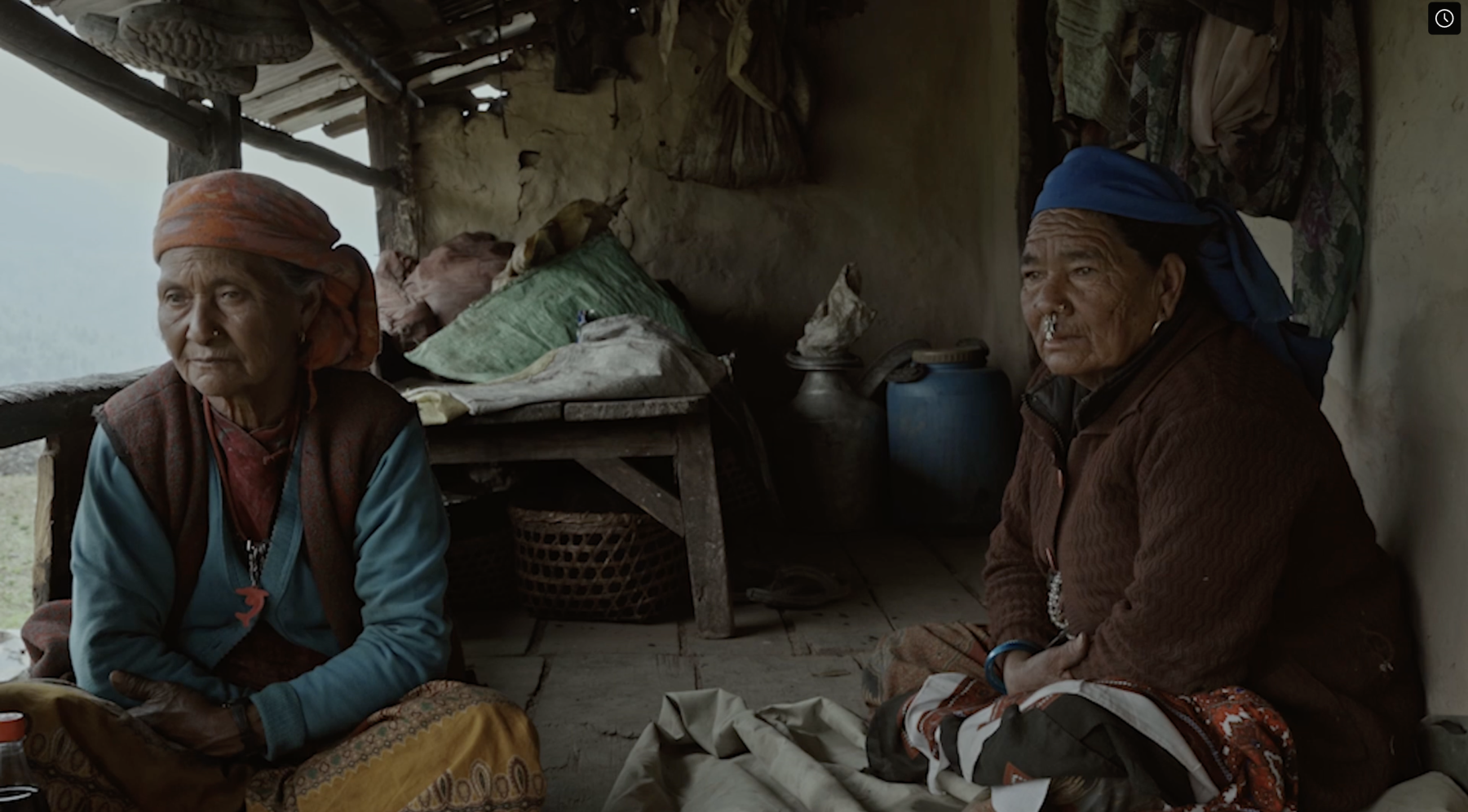
Ratima and Kalima are the only residents in a village in Dhorpatan, fending the cold, bitter and hostile environment of the winter by themselves.
However, the region is not completely inhospitable. Life can and does adapt during the winter months. In their meditative feature-length documentary Dhorpatan (No Winter Holidays, 2023), Rajan Kathet and Sunir Pandey follow two women, Ratima and Kalima, as they try to survive winter in a village that is otherwise completely empty. As the days progress and turn “soul-chilling”, there are instances of solidarity and friction between the two women—one of whom is a sauta (the Nepali term for a second wife)—which drives the narrative forward. When they are having dinner together at Kalima’s house, Kalima asks Ratima to sleep over. Ratima refuses, “[Other than my house, I sleep] only at my niece’s house.” Kalima insists, “It shouldn’t be a problem,” but Ratima does not stay.
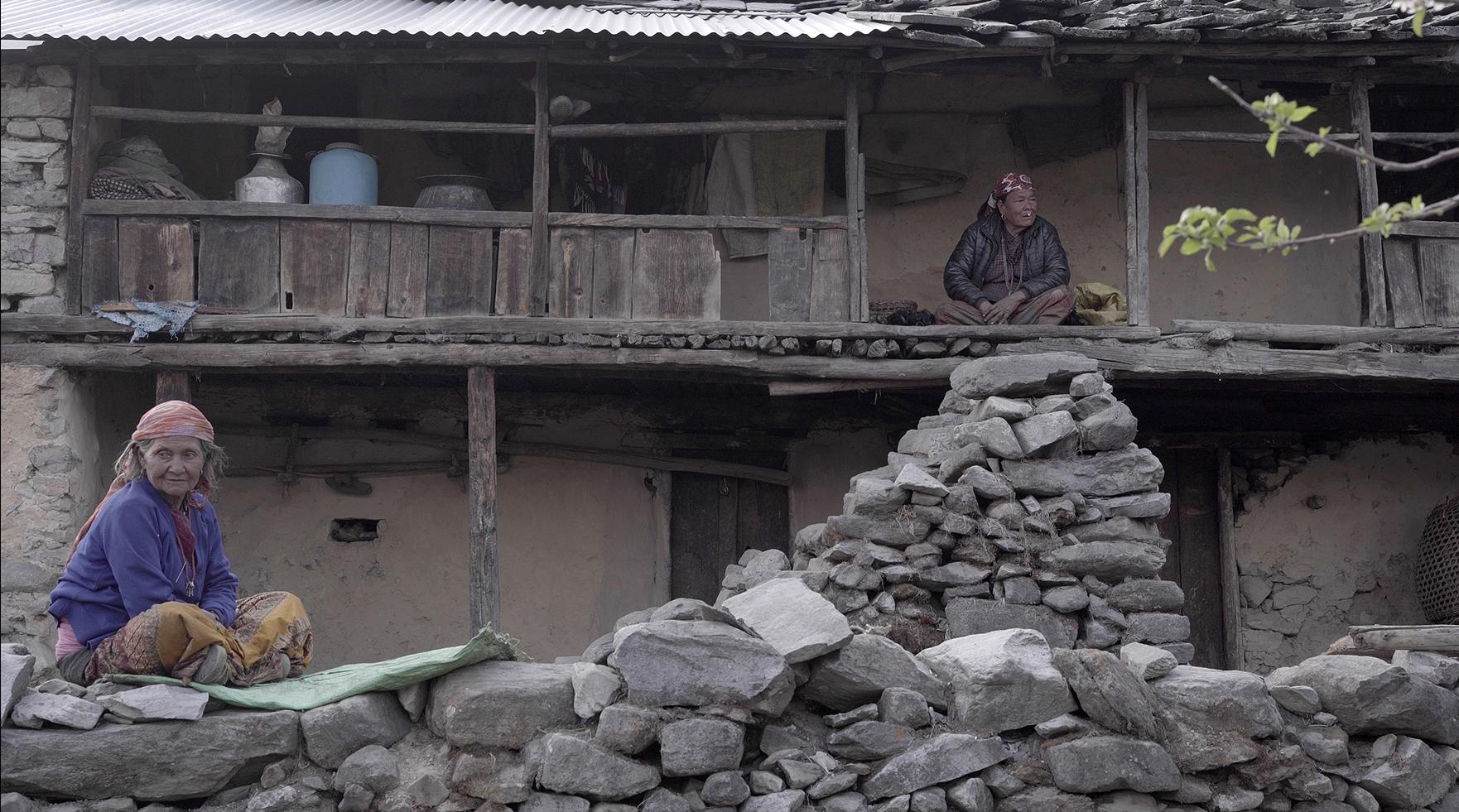
Ratima and Kalima are co-wives whose husband passed away years ago, leaving them little material wealth.
The arrival of a sudden snowstorm exposes fissures in their relationship. Before the snowstorm descends completely, Kalima goes outside to look for her unleashed cows, armed with a wooden stick and an umbrella. She forgets to bring the clothes she left drying inside and they get soaked in the snowstorm. Ratima gathers whatever dry and withering flowers she can to adorn her husband’s resting place that she built for him near a bridge. She dusts off a layer of snow from the stone structures, even as the snow shows no signs of stopping. “The bitch could have saved my clothes from the snow,” Kalima shouts when she returns home after finding her cows. She throws stones at Ratima’s house’s roof, each descending like a sonic bomb, and threatens, “Next time you ask for help…”
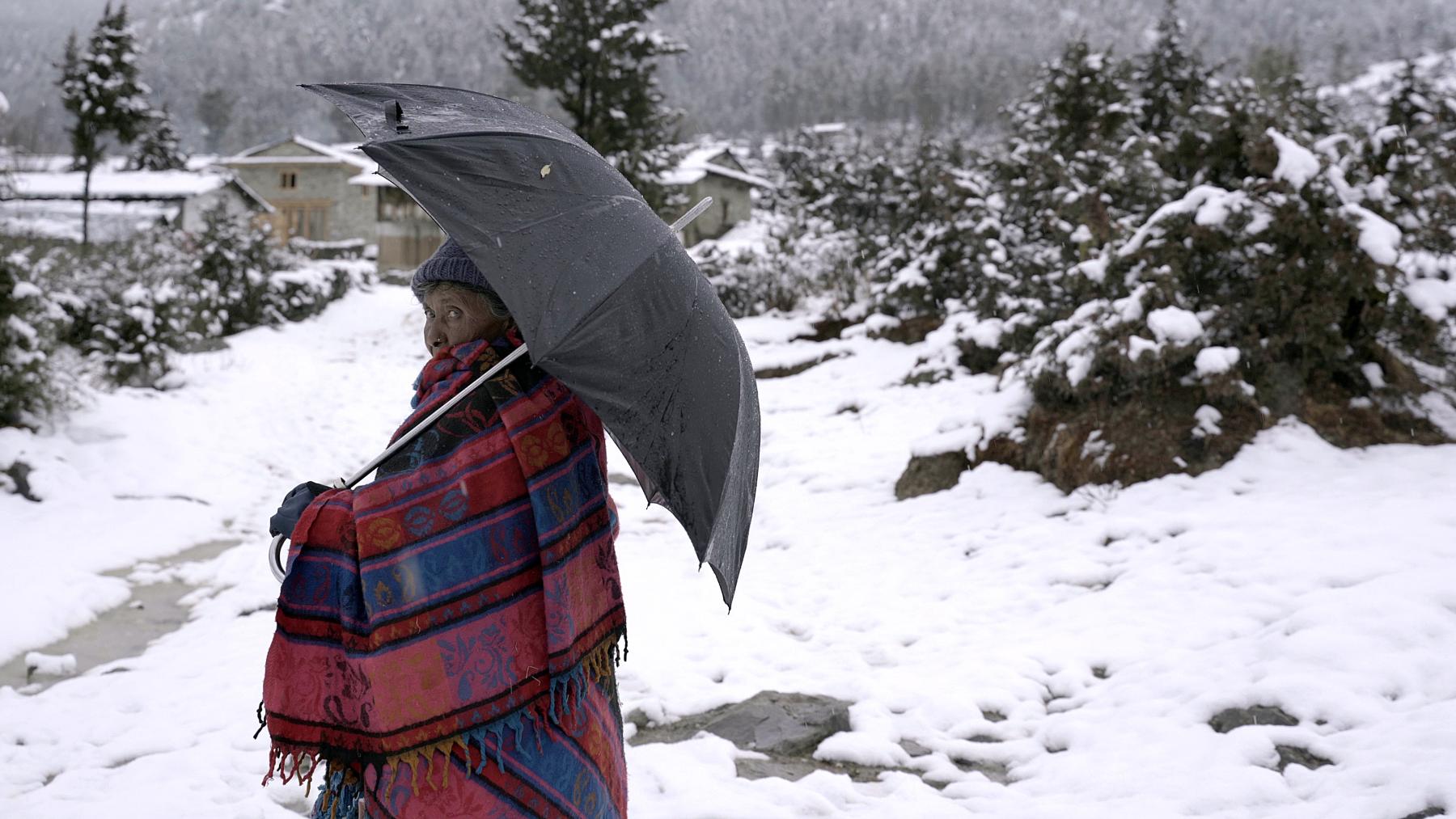
Kalima does not leash her livestock, so she heads out before a snowstorm descends to bring them back into the house and into safety.
Along with their temperaments, their approaches to surviving the winter are also contrasted with each other in the film’s narrative. While Ratima is pensive and brooding, Kalima is cheerful and talkative. Ratima seeks comfort in the past. She looks inward; most of the time, she is shown starting wistfully into a distance as a cigarette burns into ash on her lips. She has dreams of her late husband every alternate day, and she says that the strongest bond in the world is the bond between a husband and wife. On the other hand, Kalima seeks comfort in the present, among her livestock and her children. “Where are my cows today?” she wonders as she forages through sparse vegetation surviving on the wintry soil. “Where might my cows be?” she wonders again, staring at the horizon, trying to look for the outline of her cows. When she has an unsettling dream, she immediately gets concerned for her daughter’s safety and brings up her dreams when her daughter calls. She feeds her livestock while conversing with them and cursing them as if they were her children.
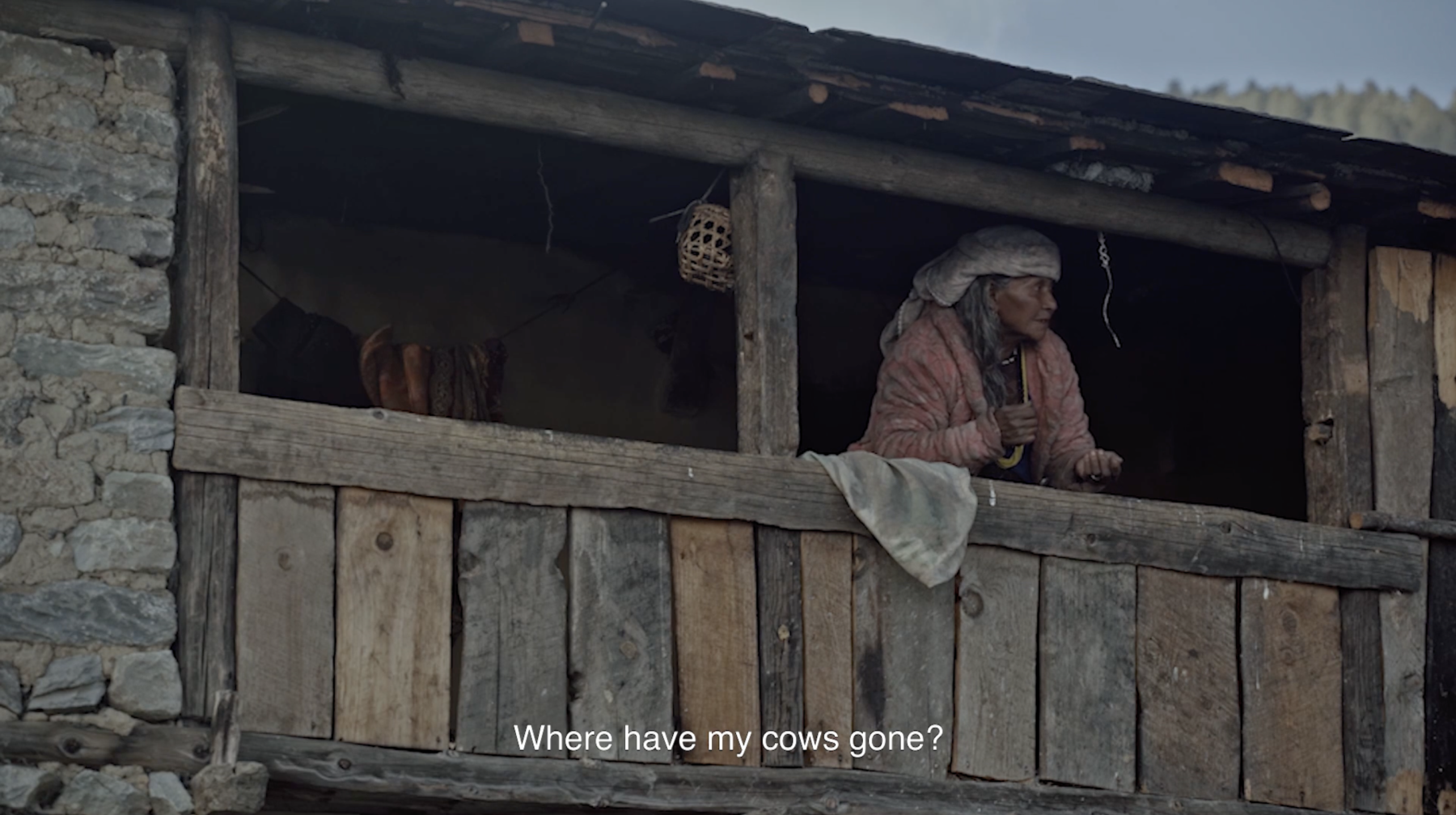
Kalima often ponders where her cows, who are left free to graze, are roaming as she looks out her window into the horizons of Dhorpatan.
The tone of the film is established within the first five minutes. Ratima, the elder wife, stands slightly off-centre on the screen, looking into the desolate, snow-blanketed landscape of Dhorpatan. The camera stands still for almost 30 seconds, rooted in the landscape, even as Ratima ponders and moves on. These static and long shots are interspersed throughout the film, which often trespasses into the realm of discomfort. Imagine staring at a wide shot of an utterly beautiful yet desolate landscape for ten seconds after the action of a scene ends. In a way, it feels as if the camera itself has been frozen still by the cold. On another register, it feels as if the film is telling its viewers, “Here I have shown you what happens in Dhorpatan. Now you also have time to ruminate.”
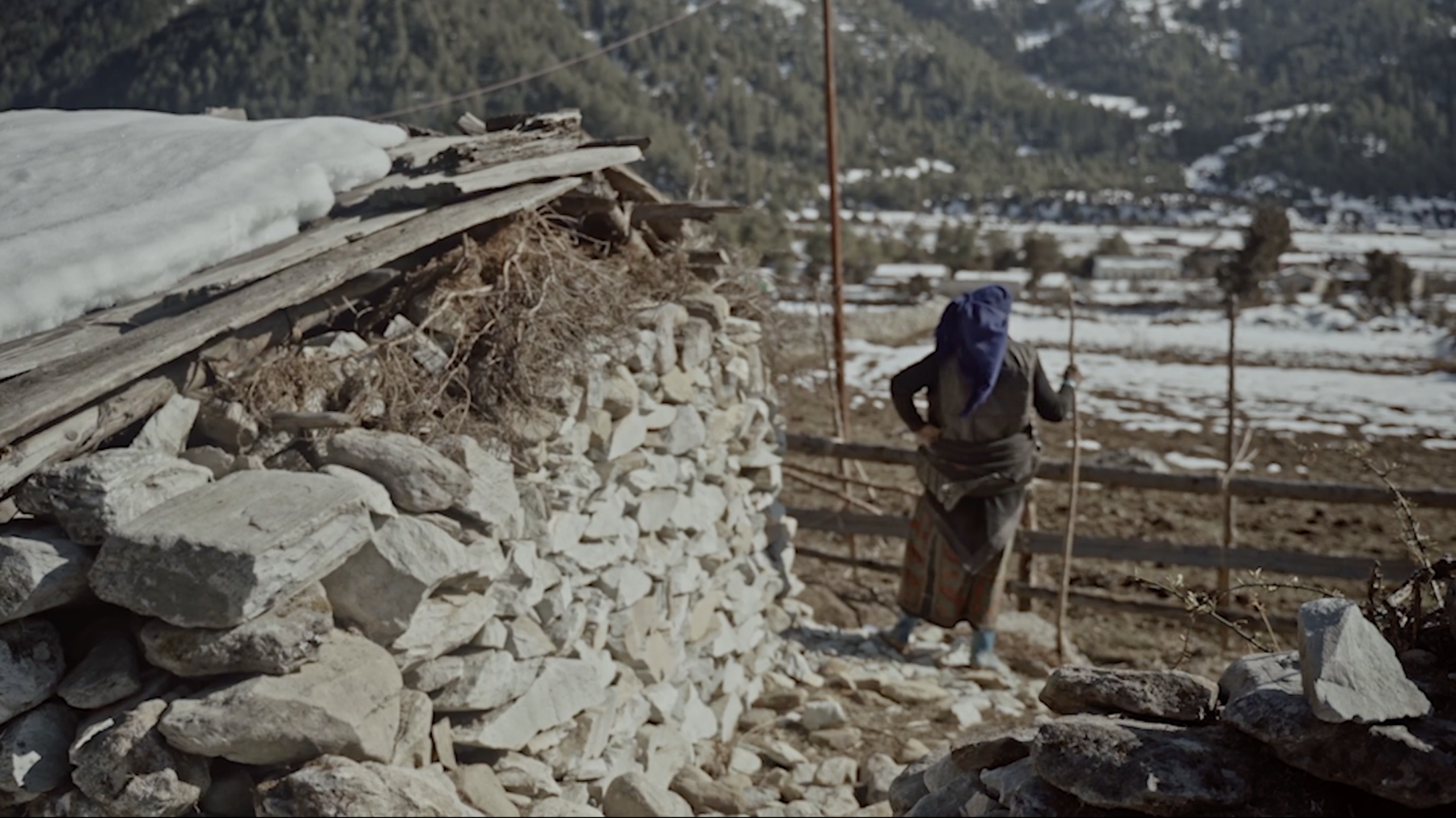
Ratima speaks little, often preferring to stare into the landscape with a cigarette on her lips.
With the slow progress of the season, No Winter Holidays gradually unfolds the terse familial bonds that the two women navigate. Ratima reveals that her husband married Kalima six months after denying that he had impregnated her. “But he never cared for them. Seven years after this [Kalima’s first pregnancy], she had another baby. Again, my husband lied that it wasn’t his,” Ratima proclaims. There is tension in the hierarchy between the co-wives. However, the two women aren’t illustrated as mere caricatures of sauta. Their social positions are not static but flow and favour one or the other at different times. For instance, the framing of the two wives on the screen often showcases their hierarchies. In the beginning, a shot with Ratima and Kalima sitting on a stone barrier shows Kalima on the higher plane with Ratima on the lower, but as the film progresses, the framing shows Ratima on the higher plane sometimes as well.
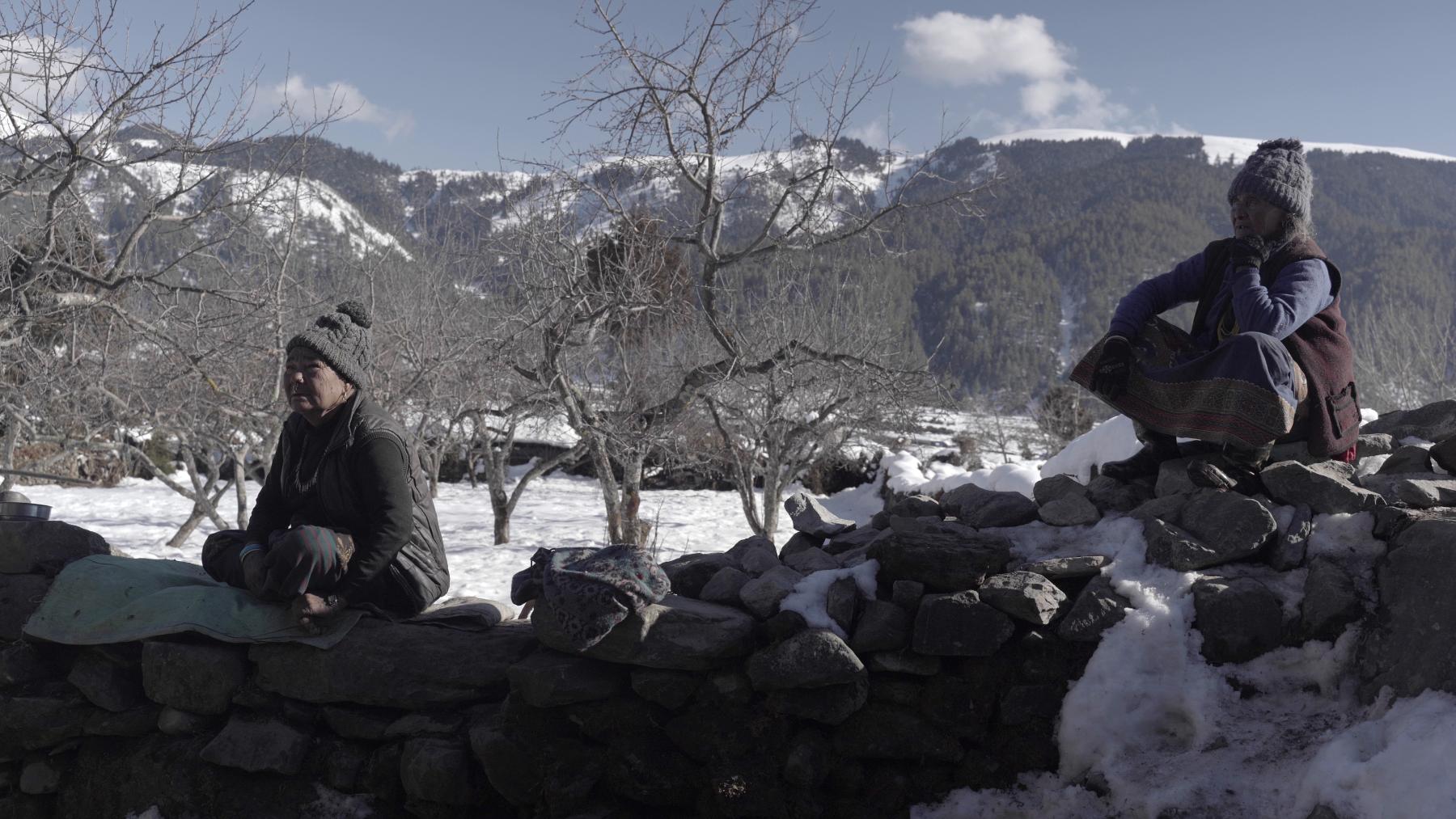
Ratima and Kalima live in the same village but in two different houses near each other.
The film asks us to make our own judgements of the characters on screen as humans with their own flaws and virtues as they try to navigate and survive in a hostile environment. Kathet and Pandey frame a tender portrayal of rivalry, old age, loneliness and begrudging solidarity that is often coterminous with the immediate landscape. As winter leaves and spring arrives at the valley of Dhor along with its other residents, the village seems completely changed; people go about their daily routine, children go to school, wives berate their husbands and so on. However, when the villagers start leaving with their livestock as the mist starts descending again, the two co-wives sit side-by-side, preparing to survive the winter together once more.
Dhorpatan (No Winter Holidays) is a part of the Kolkata People's Film Festival, taking place between 24–28 January 2024.
To read more about the films being screened in KPFF 2024, read Ankan Kazi's essay on In Search of Ajantrik (2023) by Meghnath, Kayo Kayo Colour? (2023) by Shahrukhkhan Chavada, and Santasil Mallik's essay on And, Towards Happy Alleys (2023) by Sreemoyee Singh. You can also revisit the In Person conversations with Shahrukhkhan Chavada and Wafa Refai on their film Kayo Kayo Colour? and Nishtha Jain on her film The Golden Thread.
To learn more about recent documentaries that explore life in Nepal, revisit Shranup Tandukar’s essays on Prasuna Dongol’s Before You Were My Mother and Sikuma Rai’s Come Over for a Drink, Kanchhi!
Images from Dhorpatan (No Winter Holidays, 2023) by Rajan Kathet and Sunir Pandey. Images courtesy of the directors and People's Film Collective.




